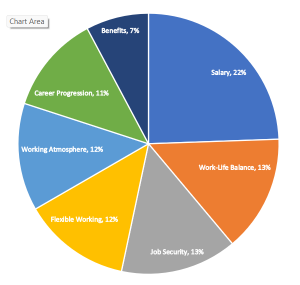Every business competes to attract the best talent to their organisation, and why? Because talented employees make a difference. So, when global events, such as The Great Resignation, starts happening, there couldn’t be a better time to look at what you are doing to ensure the retention of your top talent.
The cost of losing top talent
A recent study by recruitment company Randstad surveyed 6000 workers and found a phenomenal 67% of people are confident about moving to a new employer, and 24% are planning a move in the next few months. So, what is the actual cost of losing your best employees? Well, a study by the Society for Human Resouce Management found it can cost up to 6-9 months salary when you factor in recruitment and training costs. This can really start to cause financial strain to a business, especially when it’s estimated that 24% of employees leave a position within the first year. Other impacts to the business could include:
- Reduced productivity (at least temporarily)
- Reduced staff morale
- Damaged customer relationships if a handover is not handled well
The study by Randstad also highlighted the main reasons why employees are considering leaving their role:
How to increase your talent retention
Talk to your employees
Open and honest communication is key to talent retention. Do your employees feel listened to and valued? Are they confident approaching their manager? If not, how will you know whether there is a potential issue that may lead to employees looking for roles elsewhere? Furthermore, do you have policies in place that ensure you are aligned with your employees’ values? Do you hold regular meetings that encourage a two-way conversation about performance, workplace culture, working hours, pay, progression? Again, you can’t know if your employees are truly happy and fulfilled or planning a quick exit without this.
Promote flexibility
The last 18 months have changed the way many businesses operate forever. Businesses realised they didn’t always have to have employees in an office or that flexible working options are more cost-effective. We learnt so much. And, now it seems we may be returning to some kind of normal, it’s a good time to talk to employees about what they want their working life to look like moving forward. Flexible working has so many benefits to both employers and employees, including:
- Increased productivity
- Improvement in employee’s wellbeing
- Lower absenteeism and less chance of burnout
- Increased creativity
- Increased morale
Think more than just salary
Whilst salary is still one of the most important factors when people decide on their next career move. Other benefits are becoming just as important, and it’s not unusual for an employee to accept a lower salary in exchange for additional benefits. This could include:
- Insurance for private medical and dental fees
- Employee appreciation program
- Employee wellbeing program
- Company social events
- Paid time off
- Performance bonuses
Invest in your employees
Employees that are encouraged to learn new skills or update their existing skills are more engaged, confident, productive and generally feel more valued. Furthermore, keeping up to date with the latest training in your given field can give you a strong competitive edge in the marketplace.
Onboard new employees fully
We’ve already mentioned the percentage of people that leave their jobs within the first year; however, an engaging onboarding process can help reduce this number. A study completed by the Aberdeen Group found that companies with a robust onboarding process can retain 91% of their staff through their first year.
If you think you need help with your onboarding process or any aspect of your talent retention, Career Voyage can help. Give us a call or drop us an email for a no-obligation, confidential chat.

Sarah started her career in fmcg marketing working as a brand manager on Clover and as an interim manager on Clover (twice) and Quorn. She founded a start-up interim management company in Gloucestershire and that business changed the percentage of women and diverse talent in senior marketing and HR roles. Sarah specialises in attracting, onboarding, developing, engaging and retaining diverse talent into forward thinking businesses to improve productivity, performance and profit. Flexible working and wellbeing play a large part. Since covid-19 wreaked havoc on the job landscape, Sarah has a created an innovative programme to get senior experienced professionals back into work or fine-tune their current role so that it makes happy.


